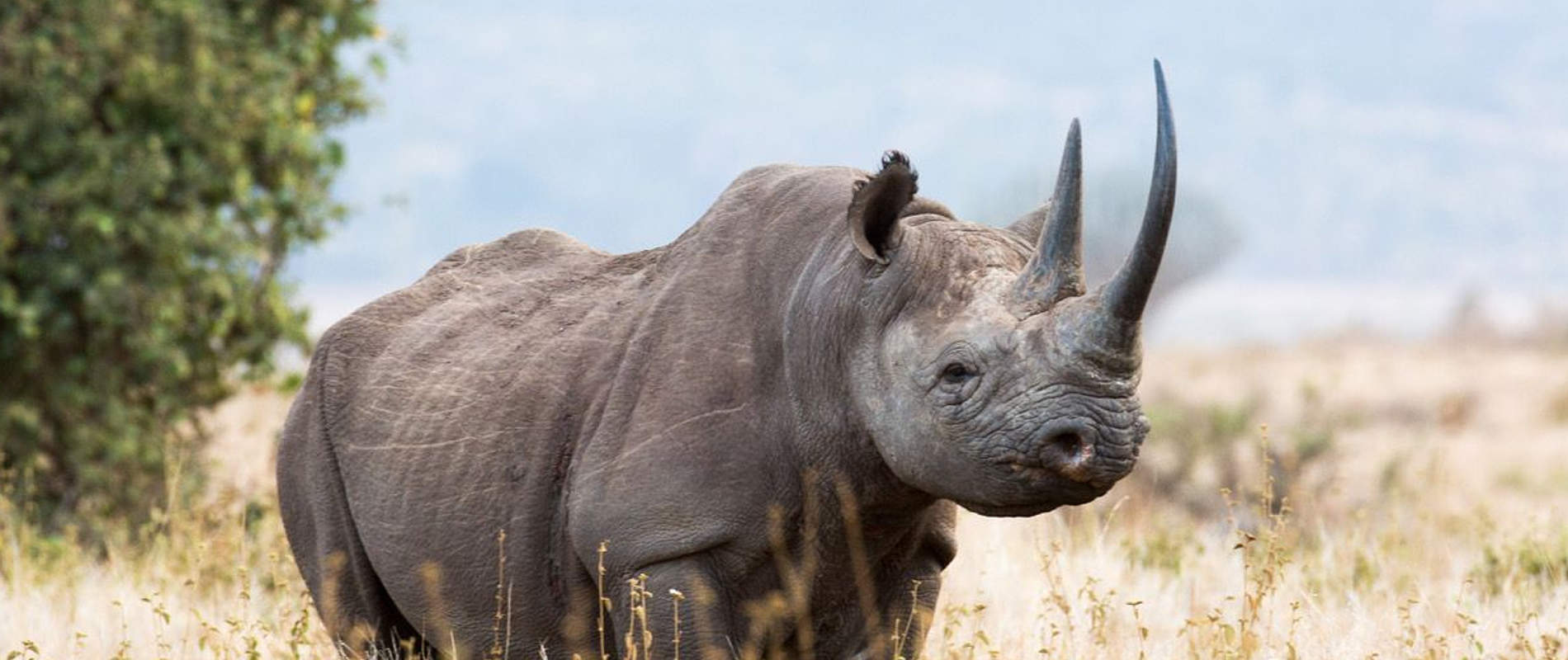Daphne Sheldrick used to call rhinos ‘the last living dinosaurs.’ It’s a fitting epithet: Over the past 60 million years, they have braved ice ages, battled prehistoric predators, and biologically adapted for the modern world.
With their thick hides and formidable horns, rhinos look invincible. However, these very features are what put them in the crosshairs of poachers. Somewhere along the line, a belief took hold that rhino horn has magical, curative properties — when, in reality, it is made of a substance identical to a human fingernail.

"The last living dinosaurs"
Poaching brought about a threat equal to any ice age. In Kenya, the black rhino population suffered a catastrophic 98 percent decline between 1970 and 1983, plummeting from 20,000 to just 350 individuals in the span of just over a decade. Across Africa, parks that were once teeming with rhinos became completely devoid of the species.

Rhinos are part of our past, present, and future
And yet, there is hope. Thanks to dedicated on-the-ground conservation efforts, bolstered by global support, rhino populations have come back from the brink. Today, Kenya is a stronghold for the species, home to 938 of the critically endangered black rhinos, 871 southern white rhinos, and the final two northern white rhinos in the world. Prodigious threats — the constant menace of poaching, to the rising challenge of habitat loss — but we can see a future for rhinos.

Rufus, one of our earliest orphaned rhinos, with Eleanor
Our commitment to rhinos spans more than half a century. In the 1960s, David and Daphne Sheldrick became the first to successfully raise orphaned rhinos in Kenya. The following decade, orphaned rhinos Stroppy and Hoshim were translocated to Solio Ranch, where they became the founding population of the renowned Solio Rhino Sanctuary. In 1982, in partnership with the KWS, we funded the formation of Kenya’s first rhino sanctuaries, in Tsavo West and Nakuru National Parks.

Meru Rhino Sanctuary is a stronghold for the species
That commitment continues today. Through extensive anti-poaching and aerial patrols, we protect the habitats rhinos call home. We are proud to support Meru Rhino Sanctuary, a bastion for the species within Meru National Park. In 2017, we partnered with the KWS on an extensive fenceline project to expand the sanctuary and create security bases and entrance gates, nearly doubling its size and providing upgraded security for Meru’s growing rhino population. We continue to fund essential infrastructure and operating costs, which ensure teams are fully outfitted to protect the sanctuary. These conservation efforts are paying off: Five baby rhino births were recorded in Meru Rhino Sanctuary between 2020-2021.

Mobile Vet Units treat rhinos for all manner of emergencies
Meanwhile, our SWT/KWS Mobile Veterinary Units provide a lifeline to rhinos across Kenya. In 2021, teams attended to 149 rhinos. Rhinos are fiercely territorial, so many of these patients had been injured in interspecies clashes.

To date, we have raised 17 orphaned rhinos
And of course, we also provide a family and a future to the babies who are left behind. To date, we have successfully raised 17 orphaned, critically endangered black rhinos. Daphne was incredibly fond of these little charges, noting: “Rhinos are among the easiest of all wild animals to tame. Scratch a rhino on its tummy and it will instantly collapse in a state of bliss — give it a tasty morsel and it will suck on it long after the morsel has disappeared, savouring the lingering taste for as long as possible.”

Solio and her second wild-born baby, Savannah
Earlier this year, our extended rhino family got a bit bigger. Solio became an orphan in 2010, after her mother was killed by poachers. After growing up at the Nursery, she was successfully reintegrated into Nairobi National Park. In 2019, we celebrated the birth of her first wild-born baby, Sultan. In January 2022, we learned that she had become a mother yet again, this time to a beautiful baby girl named Savannah!

Maxwell, the Nursery's resident blind rhino
Closer to home, Maxwell has become the honorary grandfather of our Nursery herd. Rescued in 2007, we soon discovered that a congenital eye condition had left him completely blind. A sightless rhino has no hope of survival in the wild, so Max will always call the Nursery home. Although he keeps himself to himself, as rhinos are wont to do, he enjoys a thriving social life, between visits from his Keepers and the resident wild warthogs. He is also great friends with the baby orphaned elephants, who stop by his stockade in the morning to say hello.

Apollo, a true Tsavo rhino
At our Kaluku Field Headquarters, Apollo rules the roost. He is a Tsavo rhino through and through: Apollo was rescued as an infant in September 2019, after his mother died of natural causes. Is fitting that he will ultimately be reintegrated back into this same wilderness. With his charming, complex personality, he reminds us of everything that is so enchanting about rhinos.
